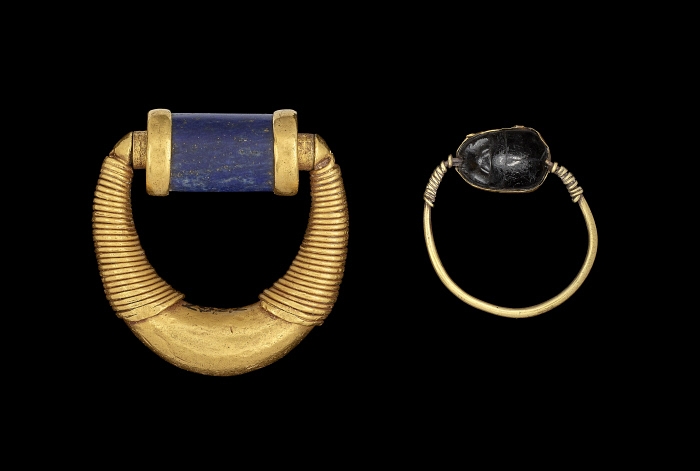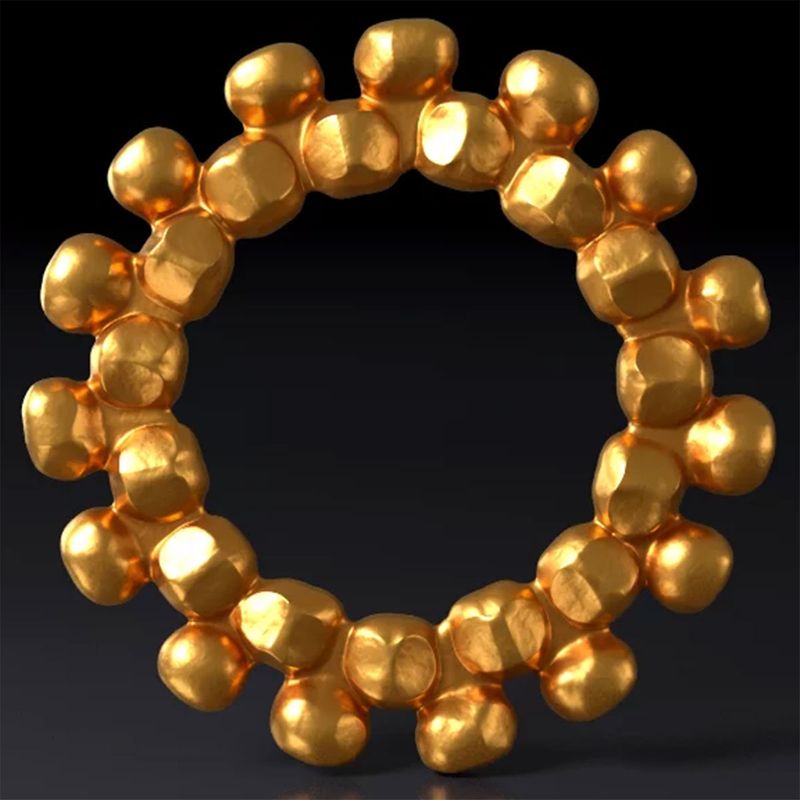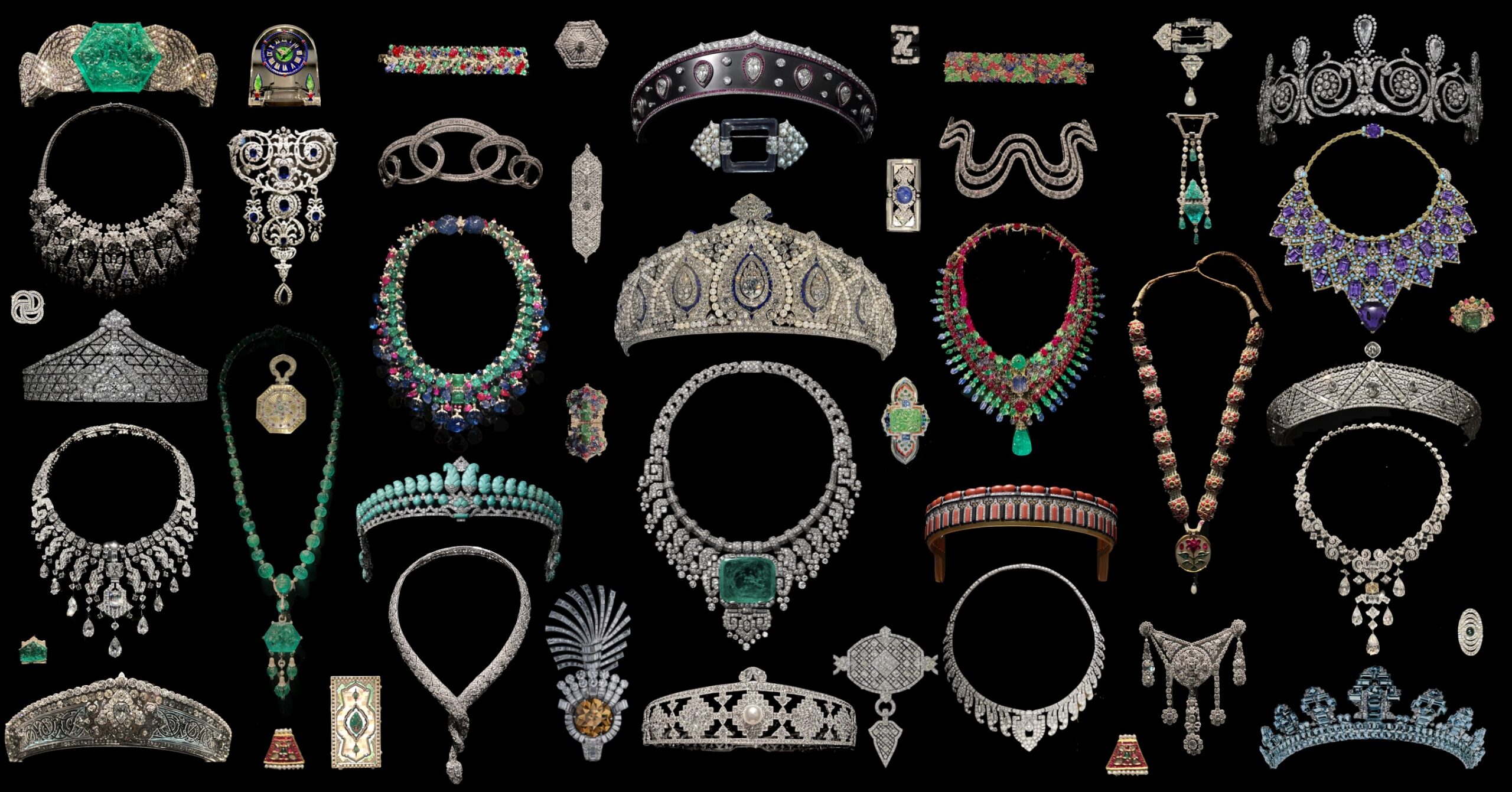News
If we could distil our sense of selves into a single solitary item, a ring may seem trivial – or even inconsequential – in the colossal prism of our lives that we each inhabit, but as far back as history allows, rings have conveyed and decoded immense amounts of information.
Throughout her work as The British Museum’s senior curator, Venetia Porter has extensively given weight to the meaning and symbology of jewellery in the Arab and Islamic world, affirming that aside from ornamentation, rings are statements of “personal and social identity”, adding that “frequently carrying inscriptions that convey personal beliefs and social status, rings are objects imbued with symbolic meaning, reflecting the complex interplay between art, faith, and identity.”
Rings in the Arab world have long been potent beacons of love and authority, woven deeply into the fabric of Middle Eastern and North African society. Globally renowned archaeologist Grahame Clarke went as far as to say that rings, for men, have always been a “symbol of excellence” and that their very existence today is a continued subconscious effort for men to “declare their identity as human beings rather than mere primates.” Precious metals and stones and objects serve as conspicuous trophies of successful emulation, as gauges of affection and assurances of personal worth and wellbeing. At the same time, they define the place of the individual in society, whether in the family or wider spheres.
Equally, they sustain as well as designate those who discharge public functions. The confidence and effectiveness of individuals in acting out the roles of magistrate, priest or sovereign are enhanced by the esteem in which the precious substances embodied in the symbols of their offices are held in society at large. Aesthetic appearance, rarity and durability may have been the physical attributes which led particular substances to be categorised as precious, but it was the fact of being recognised as such which made them effective. Susan Pollack, another leading expert in the symbology of jewellery and ancient artefacts goes as far as to say that these symbols, in this case rings, are critical to the maintenance and change of social order.
Despite the aesthetic shifts and material evolutions, the metaphorical weight and significance of rings have remained unchanged in the region since as far back as 3,000 BCE. These small items of jewellery have been the catalyst for quiet exchanges of power, divinity and political authority from the Arab peninsula to Morocco.
In ancient Egypt, rings were worn by pharaohs, priests and everyday folks. “The ring was not just an accessory; it was a statement of power and identity,” writes Egyptologist Joyce Tyldesley in Egyptian Art: In The Days of the Pharaohs. She adds: “These rings often bore the names of the gods, the pharaoh, or sacred symbols like the scarab, which were believed to provide protection and bring the favour of the divine.”

A metaphor for rebirth and the eternal cycle of life, rings were often inscribed with imagery intended to connect the wearer to the gods, serving as a kind of talisman for the afterlife. In Tutankhamun’s tomb, 36 rings were uncovered by archaeologists, each crafted from decadent materials like gold, as well as gemstones like lapis lazuli and carnelian. Often thought to offer protection, symbolising rebirth, the scarab beetle appears on jewellery throughout ancient Egypt.
“The scarab beetle was more than just an amulet; it was a symbol of regeneration and divine protection in ancient Egypt. Representations of scarabs on rings and other jewellery connected the wearer to the divine forces of creation and the cycle of life,” writes scholar Toby Wilkinson in The Rise and Fall of Ancient Egypt, affirming that rings decorated with scarabs were chiefly worn by royalty and high officials, along with signet rings, which were used to seal important documents and were engraved with hieroglyphs and depictions of the gods.
Rings were also used as a tool for protection, with deities and animals inscribed to shield the wearer from harm. Gemstones like carnelian were said to have healing properties that ward off evil spirits. According to professors Tarneem Bayoumy Zainab Elsokaily in their paper “Highlighting Some Important Gemstones in Ancient Egypt”, Carnelian was used as a talisman for protection and was believed to protect eyesight, safeguard home and bring happiness and prosperity.
Much like in ancient Egypt, the Ottoman Empire – which spanned much of the Middle East, North Africa and the Levant – used signet rings as an instrument of imperial power, with the tughra (a calligraphic interpretation of the Sultan’s signature) engraved and used as an official stamp for documents and decrees. In the time of the Ottomans, you could pinpoint the wearer’s rank by simply eyeballing the stones embedded in the ring: if the signet bore emeralds and rubies, you could guarantee they were pretty close to the Sultan.
Throughout the Arabian Peninsula, rings have long been used to interlink religious devotion and leadership. Aqeeq rings, which are typically made of agate, are thought to be a homage to the Prophet Muhammad, who was said to have worn a silver ring set with an Aqeeq stone that bore the inscription “Muhammad Rasul Allah” (“Muhammad, the Messenger of God”). Also used as a seal for documents inviting rulers and leaders to Islam, after the Prophet passed, it was said that the ring was then given to the first three Caliphs: Abu Bakr, Umar, and Uthman.
Across the Levant, the bond between holiness and aesthetics has been enmeshed since ancient times, with deity rings crafted from gold as a symbol of wealth, purity and divine favour. Usually decorated with intricate engravings or reliefs of gods or goddesses, deity rings were used for protection and power while Phoenician rings came in a spectrum of materials from silver to bronze, making them more accessible to the general public, serving as a reminder of their position in society, with symbols of trade and seafaring typically engraved on them.
Much like the Levant, the UAE has a long history of seafaring and trading, especially historically, when the region was renowned for pearl diving. One of the most important archaeological sites in the Emirates is Saruq Al-Hadid, which has led to discoveries dating as far back as the Iron Age. Over the last few decades, several rings made of gold and bronze have been found at the site, each depicting relatively simple geometric patterns which are still found across jewellery in the UAE today. This intricate hallmark of Islamic art, better known as arabesque, is known to be a testament to the infinite nature of creation, and the divine order of the universe.

Despite advancements in technology and the world in which we live, rings are still considered to be vital markers of wealth, success and influence. Across the region, they remain a potent but discrete talisman of power.
In the past, Arab leaders and rulers were judged and ranked by the jewellery they wore, but today, mostly due to the rise of quiet luxury and an influx of new markers of power, rings tend to be dialled back, symbolising a more private alliance between influential figures and their wealth. In North Africa, Morocco’s King Mohammed VI’s gold signet ring, which is often worn on the pinky finger of his right hand, is a gentle nod to traditionalism, meanwhile Sheikh Mohammed bin Rashid Al Maktoum, the ruler of Dubai, occasionally uses rings to communicate his position and dedication to his nation, whether that be through utilising the royal crest or a simple signet. Jordan’s King Abdullah II wears many discreet but telling rings, one of which being a gold signet, and another carrying the Jordanian coat of arms, a clear dedication to his position as the monarch, and his position within the royal family.
Held close to the body, jewellery also serves as an intimate declaration of faith and commitment. Throughout her work, Sheila Blair – an expert in the field of Islamic calligraphy – unravels the mystical elements of circular motifs in Islam, which are employed as a representation of the unending cycle of existence, the concept of eternity and the unbroken, continuous line of the spiritual and temporal worlds. Given this symbology, it should come as no surprise that rings continue to carry major metaphysical meanings as the physical manifestation of our eternal bonds and the presence of the divine.
In the modern context, some of the world’s most renowned high jewellery brands have become accustomed to the ritual and tradition of the Middle Eastern palette, lifting their Western-leaning craft and placing it in the context of the Arab world, designing incredible pieces enriched with personal prophecies and storytelling for leaders from the UAE to Saudi Arabia (naturally, they are extremely private about said clients). In August, Graff – founded by British jeweller Laurence Graff in 1960, and has crafted bespoke pieces for countless kings and queens since its inception – partnered up with the Bahrain Institute for Pearls and Gemstones.
Earlier this year, the standout exhibition “Cartier, Islamic Inspiration and Modern Design” ran until late March at the Louvre Abu Dhabi – and has now been immortalised as a reference – featured over 400 pieces of jewellery and art that influenced Louis Cartier as far back as 1910. Cartier and his team of designers would often pluck inspiration from the legendary designer’s colossal Islamic art collection, which was propped up by his brother Jacques’ travels to the Arabian Gulf.
The exhibition’s curators Judith Henon-Raynaud and Évelyne Possémé enthused that it was in fact the Middle East that inspired many of the modern designs we see in the West today, and not the other way around.

Transcending its physical form, rings are in many ways a manifestation of the intense personal sacrifices and societal pressures that define being Arab today. Much like reality itself, rings are a powerful reminder that a ring is never just a ring—it’s a symbol of survival, identity, and the indomitable human spirit.
Whether we should choose to expose or conceal, the quiet bonds we make between the jewellery we wear and the beliefs we ascribe to can be enhanced or minimised at will. As time evolves and the region transforms with the ebb and flow of modernity, the poetry of rings remains steadfast. Their enduring traditionality is not born out of design limitations but arises from a deeper, more philosophical understanding that jewellery—much like our bonds with ourselves, our communities, and our faith—is profoundly personal. Rings are sacred vessels steeped in ancient wisdom.
Unyielding to the allure of progress or the hurried energy of technological advancements. They stand as timeless symbols and a homage to the region’s enduring heritage. In their simplicity, they embody the ageless continuity of our culture, the eternal horizons that lie ahead and the thread that binds us to our past, present, and future.
And if this has gotten you interested in the world of men’s rings, L’ÉCOLE Middle East, School of Jewelry Arts in Dubai, has unveiled a first-of-its-kind exhibition in the region that promises to captivate both jewellery lovers and design enthusiasts. Running until April 26, 2025, the highly anticipated Men’s Rings, Yves Gastou Collection is showcasing more than 700 exceptional rings from the personal collection of the late French antique art dealer and collector Yves Gastou.
To discover more about the exhibition (free admission upon website registration), and L’ÉCOLE’S jewellery courses visit their webpage.
Words: Samira Larouci